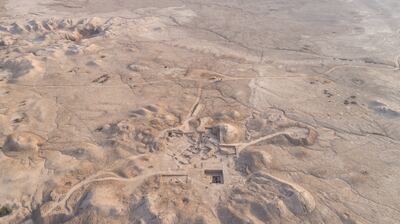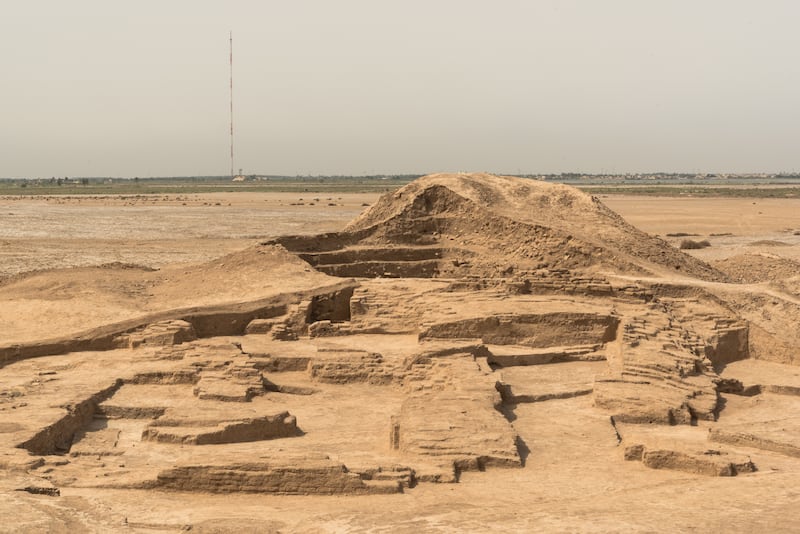The remains of a lost Sumerian palace in the ancient city of Girsu, dating back at least 4,500 years to the third millennium, has been found by a group of archaeologists in southern Iraq.
The excavations of the ancient complex of Girsu project in Iraq is led by the British Museum, the State Board of Antiquities and Heritage of Iraq, and Getty. It is a joint initiative to save endangered heritage sites.
Tello is the modern Arabic name for the ancient Sumerian city of Girsu, one of the earliest known cities in the world.
Girsu is a city and temple complex established by the Sumerians in about 3000 to 2000 BC.
The Sumerians invented writing, governance, architecture and are considered the creators of civilisation as modern humankind understands it.
The discovery of the complex more than 140 years ago led to greater understanding of the Sumerian civilisation, which developed some of the most important aspects of Mesopotamian art and architecture.
They include both the statuary of the ruler Gudea and a bridge built of baked brick, which is the oldest bridge yet discovered in the world, according to the British Museum.
“While our knowledge of the Sumerian world remains limited today, the work at Girsu and the discovery of the lost palace and temple hold enormous potential for our understanding of this important civilisation, shedding light on the past and informing the future," Dr Hartwig Fischer, director of the British Museum, told The Press Association.

Sebastien Rey, curator for ancient Mesopotamia and director of the Girsu project, said the palace is one of the most important heritage sites in the world, although little is known about Girsu.
“It is also a unique site to deliver a training programme on rescue archaeology for heritage professionals and students in Iraq in the context of a fully-fledged research project," Dr Rey said.
He said more than 80 years of fieldwork interruption at the site have taken their toll.
“The Girsu project, with the support of Getty, is a remarkable opportunity to secure this extraordinary site’s long-term conservation,” he said.
The project, developed by the British government in 2015, was established in response to the destruction of significant artefacts and sites in Iraq and Syria by ISIS.
Excavations in the 19th and 20th century devastated the sites but it is known that ancient artefacts and remains are still to be discovered at the site.
Dr Rey told the PA news agency it felt "good" to make the discovery after campaigning to launch the project for so long.
“I remember when I started in 2016 no-one believed me, I went to international conferences and everyone basically told me, ‘Oh no you’re making it up you’re wasting your time you’re wasting British museum UK government funding’ – that’s what they were telling me.
“I had other supporters and people who believed in this project and so we just persevered.
“Of course, there was the research element and also the training, even if we had not discovered the temple it still would have been an amazing experience but the cherry on the cake was the temple.”







